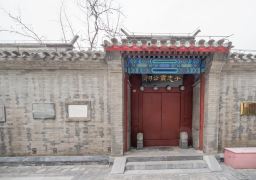Xi Dong Bridge is located in Sisi Town and is named for its location over the Dongxi River within the town. The bridge was originally constructed in the fourth year of the Longqing era of the Ming Dynasty (1570), and was later re-surfaced in the tenth year of the Qianlong era of the Qing Dynasty (1745), and renovated in the seventh year of the Daoguang era. The entire bridge measures 41.7 meters in length, 4.86 meters in width, and 10.35 meters in height, with 15 sections of bridge houses. The central three sections are palace-style main buildings, featuring eaves that extend and rise at the corners. Above the bridge structure, figures of ‘Ao Yu Shuang Tu Shuǐ’ are sculpted, while below are sculptures depicting ‘Tang Seng’s Journey to the West’ and various crafts such as plum, orchid, bamboo, and chrysanthemum, all vividly portrayed. The bridge’s head extends dramatically, giving an impression of swallowing clouds and spitting mist. Under the eaves of the bridge surface, three sections of the ceiling are intricately and quaintly constructed, making the bridge appear more elegant and majestic. The clear stream flows beneath the bridge, with a distant mountain view on one side and two towering peaks nearby, known as the Lion’s Gap and the General’s Peak. According to local residents, the bridge and its surrounding environment form a ‘General Teasing Lion’ Feng Shui pattern. The red bridge body set against the green mountains and clear waters is even more ethereal and beautiful. The bridge is open all year round and is accessible 24 hours a day.
Xi Dong Bridge
Xi Dong Bridge is located in Sisi Town and is named for its location over the Dongxi River within th[...]









